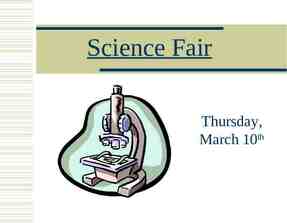Type 2 Diabetes Pennington Biomedical Research Center Division
40 Slides809.00 KB
Type 2 Diabetes Pennington Biomedical Research Center Division of Education
Type 2: Overview Type 2 is the most common form of diabetes (DM). In this form, the body does not produce enough insulin or the cells ignore the insulin that is produced. Insulin is required by the body in order to use sugar. Insulin takes the sugar from the blood into the cells. When glucose builds up in the blood instead of going into cells, it can cause some problems: In the short-term, your cells may be starved for energy In time, high blood glucose may hurt your eyes, kidneys, nerves, or heart. PBRC 2009 2 of 39
Insulin Inside the pancreas, beta cells make the hormone insulin. Beta cells release insulin to help the body use or store blood glucose from food. In people with type 1 diabetes, the pancreas no longer makes insulin. The beta cells have been destroyed and insulin shots are the only way to keep blood glucose levels down. People with type 2 diabetes make insulin, but their bodies don't respond well to it. Only some people with type 2 diabetes need diabetes pills or insulin shots to help their bodies use glucose for energy. PBRC 2009 3 of 38
Who Gets Diabetes? Although diabetes occurs in people of all ages and races, some groups have a higher risk for developing type 2 diabetes than others: African Americans Latinos Native Americans Asian American/Pacific Islanders Aged population PBRC 2009 4 of 39
Conditions that can arise from Type 2 DM Hypoglycemia Hyperglycemia Hyperosmolar Hyperglycemic Nonketotic Syndrome (HHNS) PBRC 2009 5 of 39
Hypoglycemia Hypoglycemia or low blood glucose (sugar) is a problem that happens from time to time to everyone who has diabetes. It is sometimes referred to as “insulin reaction.” Although it may be unavoidable at times, it is important to know how to recognize and treat the condition immediately before symptoms worsen. PBRC 2009 6 of 39
Symptoms of Hypoglycemia Shakiness Dizziness Sweating Hunger Headache Pale skin color Sudden moodiness or behavior changes, such as crying for no apparent reason Clumsy or jerky movements Seizure Difficulty paying attention, or confusion Tingling sensations around the mouth PBRC 2009 7 of 39
Low Blood Glucose You should check your blood glucose level according to the schedule you work out with your doctor. In addition, you should check your blood glucose any time you feel low blood glucose coming on. If you check and observe a low blood glucose level, then treat for hypoglycemia quickly. A good rule if you are unable to check is: “When in doubt, treat.” PBRC 2009 8 of 39
Treating Hypoglycemia The quickest way to raise your blood glucose and treat hypoglycemia is with some form of sugar, such as: 3 glucose tablets ½ cup of fruit juice 5-6 pieces of hard candy Once you have checked your blood glucose and treated the hypoglycemia, wait 15 to 20 minutes and then recheck your blood again. If your blood sugar is still low and symptoms of hypoglycemia haven’t went away, repeat treatment. PBRC 2009 9 of 39
Importance of Quick Treatment If hypoglycemia is not treated quickly enough, you could pass out. If you pass out, you will need immediate treatment, such as an injection of glucagon or emergency treatment in a hospital. Glucagon, like insulin, is injected. However, glucagon works to raise blood glucose. Your doctor can prescribe glucagon and tell you how to use it. PBRC 2009 10 of 39
Importance of Quick Treatment If you pass out from hypoglycemia, people should: NOT inject insulin NOT give you food or fluids NOT put their hands in your mouth Inject glucagon Call for emergency help PBRC 2009 11 of 39
Hyperglycemia Hyperglycemia is the technical term for high blood glucose. It happens when the body has too little or not enough insulin or when the body can’t use insulin properly. A number of factors can be the cause of hyperglycemia, including: Eating more than planned Exercising less than planned The stress of an illness, such as a cold or flu Other stresses, such as family conflicts or dating problems PBRC 2009 12 of 39
Symptoms of Hyperglycemia High blood glucose High levels of sugar in the urine Frequent urination Increased thirst It is important to monitor blood glucose levels frequently. If hyperglycemia is detected, treatment should begin immediately. Failing to treat hyperglycemia could lead to a condition called ketoacidosis Ketoacidosis occurs when the body doesn’t have enough insulin. Without insulin, the body can’t use glucose for fuel, so it is left breaking down fats for energy. PBRC 2009 13 of 39
Hyperglycemia Leading to Ketosis Waste products (ketones) are generated as your body breaks down fats. Large amounts of ketones cannot be tolerated by the body. So, your body will try to excrete these ketones through the urine. However, not all will be excreted, causing the remaining to build up in the blood. This buildup leads to Ketosis. PBRC 2009 14 of 39
Symptoms of Ketosis Shortness of breath Breath that smells fruity Nausea and vomiting A very dry mouth PBRC 2009 15 of 39
How to Treat Hyperglycemia Exercise is often effective in lowering blood glucose levels. However, if your blood glucose is above 240 mg/dl, check your urine for ketones. If they are present, do NOT exercise. This can actually lead to higher blood glucose levels than prior to beginning the exercise. You will need to work with your doctor on finding the best way to lower your blood glucose level. PBRC 2009 16 of 39
Hyperosmolar Hyperglycemic Nonketotic Syndrome Referred to as HHNS It is a serious condition most frequently seen in older persons. Can occur in type 1 or type 2 diabetes, but is most commonly seen in type 2. HHNS is usually brought on by something else, such as an illness or infection PBRC 2009 17 of 39
Hyperosmolar Hyperglycemic Nonketotic Syndrome In HHNS, blood sugar levels rise. Your body tries to rid itself of excess sugar by passing it through the urine. Initially, you produce a lot of urine, and you have to go to the bathroom often. With time, you may not have to go as often, and the urine becomes very dark. You may be very thirsty. Even if you are not thirsty, it is very important to consume a lot of liquids to prevent dehydration. If HHNS continues, severe dehydration can potentially lead to: Seizures, coma, or even death PBRC 2009 18 of 39
Warning Signs of HHNS Blood sugar level over 600 mg/dl Dry, parched mouth Extreme thirst (which may gradually disappear) Warm, dry skin that does not sweat High fever Sleepiness or confusion Loss of vision Hallucinations (seeing/hearing things that aren’t there) Weakness on one side of the body ( 101 degrees Fahrenheit) PBRC 2009 19 of 39
To prevent HHNS Check your blood sugar regularly. It’s best to speak with your doctor about how often you should check your blood glucose and what your target range should be. PBRC 2009 20 of 39
Importance of Monitoring Blood Glucose Keeping your blood glucose in your target range can help prevent or delay the start of diabetes complications such as nerve, eye, kidney, and blood vessel damage. Once an individual learns that he/she had diabetes, it is important to work with your health care team to create a diabetes care plan. The plan aims to balance the foods you eat with your exercise, and, possibly, with diabetes pills or insulin. There are two types of checks that you can do to help keep track of how your plan is working: Blood glucose checks Urine ketone checks PBRC 2009 21 of 39
Blood Glucose Monitoring Checks This is the main tool you have to check diabetes control. The check can tell you your blood glucose level at any one time. Keeping a log of results is important. You can present this log to your health care provider The log provides your health care provider with a good picture of your body’s response to your diabetes care plan. Allows to make needed changes, if necessary PBRC 2009 22 of 39
Who Should Check? Experts feel that anyone with diabetes can benefit from checking their blood glucose. The American Diabetes Association recommends blood glucose checks if you have diabetes and are: Taking insulin or diabetes pills On intensive insulin therapy Pregnant Having a hard time controlling your blood glucose levels Having severe low blood glucose levels or ketones from high blood glucose levels Having low blood glucose levels without the usual warning signs PBRC 2009 23 of 39
Urine Checks Not as accurate as blood glucose checks Should not be done unless blood testing is impossible A urine check for ketones is another matter. This is an important check when your diabetes is out of control or when you are sick. When the body is burning fat instead of glucose, you could expect to find moderate or large amounts of ketones in urine. Everyone with diabetes should know how to check their urine for ketones. PBRC 2009 24 of 39
When to Test for Ketones Ask your doctor or nurse when to check for ketones. You may be advised to check for ketones when: Your blood glucose is more than 300 mg/dl You feel nauseated, are vomiting, or have abdominal pain You are sick (example– with a cold or the flu) You feel tired all the time You are thirsty or have a very dry mouth Your skin is flushed You have a hard time breathing Your breath smells “fruity” You feel confused or “in a fog” PBRC 2009 25 of 39
Tight Control and Diabetes The benefit of tight control of blood glucose can be in the prevention or slower progression of many complications of diabetes, giving you extra years of healthy, active life. Tight control is not for everyone, and it involves hard work. PBRC 2009 26 of 39
Tight Control and Type 2 Diabetes Much of the previous research on the benefits of tight control and diabetes has involved type 1 diabetes. Doctors believe that tight control can also prevent complications in people with type 2 diabetes as well. Most people with type 2 diabetes do not take insulin, so it may not be apparent how such tight control could occur. PBRC 2009 27 of 39
Tight Control and Type 2 Diabetes One way is to lose weight. Shedding excess pounds may bring your glucose levels down to normal. The key to losing weight and to keeping it off is behavior change. Your doctor should work with you to find an eating and exercise plan right for you. Exercise Even without a weight loss, exercise proves beneficial with blood glucose control. It makes your cells take glucose out of the blood. PBRC 2009 28 of 39
Tight Control and Type 2 Diabetes Blood glucose will need to be checked regularly. You and your doctor should decide how often. Once a day or even once a week may be enough for individuals with type 2 diabetes. If exercise and eating habits still aren’t enough to keep glucose in check, your doctor may prescribe pills. Insulin is prescribed only when diet and exercise, along with pills prove to be not enough to keep blood glucose levels under control. Most importantly, people with type 2 diabetes should talk with their doctors before starting tight control. PBRC 2009 29 of 39
Tight Control Children Not Recommended For: Having enough glucose in the blood is vital for brain development. Controversy over what is the appropriate age to start. Some doctors say age 13, others say 7 is fine. Elderly people Hypoglycemia can cause strokes and heart attacks in older people. Also, the major goal of tight control is to prevent complications many years later. Tight control is most worthwhile for healthy people who can expect to live at least 10 more years. PBRC 2009 30 of 39
Tight Control Some individuals who already have complications For example, individuals with end-stage kidney disease or severe vision loss probably should not try for tight control. Their complications are likely to be too far along to receive benefits from tight control. Some individuals with diseases Not Recommended For: For some with coronary artery disease or vascular disease, tight control is not indicated. Individuals with hypoglycemia unawareness It would not be safe for these people to attempt tight control. PBRC 2009 31 of 39
Diabetes Medications In type 2 diabetes, when the initial treatment options fail (meal planning, weight loss, and exercise) to control blood glucose levels, the next step is taking a medicine that lowers blood glucose levels. All diabetes pills sold today in the United States are members of five classes of drugs: Sulfonylureas Meglitnides Biguanides Thiazolidnediones Aplha-glucosidase inhibitors PBRC 2009 32 of 39
How They Work Sulfonylureas: Work by stimulating the beta cells of the pancreas to release more insulin Have been around since the 1950’s Are generally taken one to two times a day, before meals All sulfonylurea drugs have similar effects on blood glucose levels, but they differ in side effects, how often they are taken, and interactions with other drugs. Diabinese, Glucotrol and Glucotrol XL, Micronase, Glynase, Diabeta, and Amaryl are examples of brand names on the market. Meglitinides Also work by stimulating the beta cells to release insulin Prandin and Starlix are some examples of brand names on the market. Because sulfonylureas and meglitinides stimulate the release of insulin, it is possible to have hypoglycemia. PBRC 2009 33 of 39
How They Work Biguanides: Lower blood glucose by decreasing amount of glucose made in the liver An example is Metformin, brand name Glucophage. Metformin also helps to lower blood glucose levels by making muscle tissue more sensitive to insulin so that glucose can be absorbed. Usually taken two times a day. A side effect of Metformin may be diarrhea, but is improved when taken with food. Thiazolidinediones Helps insulin work better in muscle and fat and reduces glucose production in the liver. Taken once or twice a day with food. Avandia, Rezulin, and ACTOS are some examples of brand names on the market. Although effective in lowering blood glucose, thiazolidnediones can have a rare but serious effect on the liver. Therefore, your doctor will have to perform blood tests regularly to monitor the liver. PBRC 2009 34 of 39
How They Work Alpha-glucosidase inhibitors These drugs help the body to lower blood glucose levels by blocking the breakdown of starches, such as bread, potatoes, and pasta in the intestine. They also slow the breakdown of some sugars, like table sugar. Their action slows the rise in blood glucose observed after meals. They should be taken with the first bite of a meal. Side effects include gas and diarrhea. Precose and Glyset are examples of brand names on the market. PBRC 2009 35 of 39
Oral Combination Therapy Since the 5 classes of drugs at in different ways to lower blood glucose levels, they may be used in combination. For example, a biguanide and sulfonylurea could be used together. There are many other combinations that can be taken together. Although taking more than one drug can be costly and can increase the risk of side effects, combining oral medications can improve blood glucose control compared to taking only a single pill that does not have the desired effects. PBRC 2009 36 of 39
Overview of Diabetes Medications Only people with type 2 diabetes can use pills to manage their diabetes. The pills work best when combined with meal planning and exercise. Diabetes pills aren’t necessarily for everyone, although most see improvements. Diabetes pills may stop working after months or years. This does not mean that your diabetes is worse. Usually the cause is unknown as to why they quit working. When this occurs, oral combination therapy usually works best. If you become pregnant, you will need to control your blood glucose with diet and exercise, or with diet, exercise, and insulin. It is not safe for pregnant women to take oral diabetes medications. PBRC 2009 37 of 39
Division of Education Phillip Brantley, PhD, Director Pennington Biomedical Research Center Claude Bouchard, PhD, Executive Director Heli J. Roy, PhD, RD Shanna Lundy, BS Beth Kalicki Edited: October 2009 Division of Education
About Our Company The Pennington Biomedical Research Center is a world-renowned nutrition research center. Mission: To promote healthier lives through research and education in nutrition and preventive medicine. The Pennington Center has several research areas, including: Clinical Obesity Research Experimental Obesity Functional Foods Health and Performance Enhancement Nutrition and Chronic Diseases Nutrition and the Brain Dementia, Alzheimer’s and healthy aging Diet, exercise, weight loss and weight loss maintenance The research fostered in these areas can have a profound impact on healthy living and on the prevention of common chronic diseases, such as heart disease, cancer, diabetes, hypertension and osteoporosis. The Division of Education provides education and information to the scientific community and the public about research findings, training programs and research areas, and coordinates educational events for the public on various health issues. We invite people of all ages and backgrounds to participate in the exciting research studies being conducted at the Pennington Center in Baton Rouge, Louisiana. If you would like to take part, visit the clinical trials web page at www.pbrc.edu or call (225) 763-3000. PBRC 2006 39 of 38
Sites All diabetes-related information is from the American Diabetes Association. Available at: http://www.diabetes.org PBRC 2006 40 of 38













































